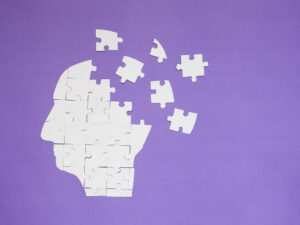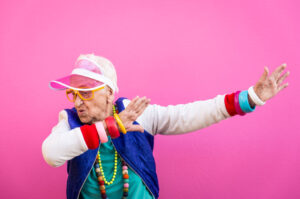
Let’s Get Physical: Dancing increases cognitive acuity at all ages.
By Regina Smith, MSW
Let’s Get Physical
I know some of you are too young to remember this song written in 1981, by English-Australian singer and actress, Olivia Newton-John. But I recall hitting the dance floor and busting some serious dance moves that really got my heart rate going when I heard this song…
Let’s get physical, physical.
I wanna get physical.
Let’s get into physical!
Now, did you to start bobbing your head a little bit or patting your foot? Is that song stuck in your head now? I could just break out and starting dancing and singing right now, …😊.
I found a fascinating study by led by the Albert Einstein College of Medicine in New York City, and published in the New England Journal of Medicine (Powers, 2015). Their objective was to measure the mental acuity in older adults by monitoring their rates of dementia, including Alzheimer’s disease. The study also looked at nonphysical activities such as reading books, writing for pleasure, doing crossword puzzles, playing cards, and playing musical instruments. And they studied physical activities like playing tennis or golf, swimming, bicycling, dancing, walking for exercise and doing housework. What they discovered was a candid health benefits in dancing.
All these activities where great benefits to someone living with cardiovascular disease, but dancing was found to protect against dementia. Here’s some numbers mentioned in this study (Powers, 2015), that will make you put on your blue suede shoes and really get down.
- Reading – 35% reduced risk of dementia.
- Bicycling and swimming – 0%
- Doing crossword puzzles at least four days a week – 47%
- Playing golf – 0%
- Dancing frequently – 76%. That was the greatest risk reduction of any activity studied, cognitive or physical.
Prima Ballerina
I recall reading an article about a prima ballerina Marta C. Gonzalez, who was diagnosed with Alzheimer’s disease. Marta was handed a pair of headphones to listen to Tchaikovsky’s Swan Lake. Almost as soon as the music began to play a look of recognition swept across the elderly woman’s face, taking her back in time to when she performed on stage in 1967 (Brown, 2020). Although she was bound to her wheelchair, that did not stop her from using her arms and upper body to perform the choreography she remembered from years gone by. The Asociacion Musica para Despertar, which translates to the Music Association for Awakening, wrote ‘The power of music is immeasurable.’
May I have this Dance?
Five ways dance “therapy” makes a difference for those living with Alzheimer’s or dementia,
- Here at Independent Adult Day Centers, we use dance to help our Guests express themselves through movement: Dance “therapy” allows those with Alzheimer’s disease and dementia to move as a means to communicate, which helps them develop a “physical vocabulary.” We use props like parachutes and foam noodles that encourages the Guests to push and pull and offer ways for our Guests to connect with other people, especially those with limited mobility. You see their eyes light up. People in a wheelchair may get up to dance. Suddenly, someone who hasn’t been very responsive is tossing a balloon.
Let’s get physical, physical.
I wanna get physical.
Let’s get into physical!
- Reduce anxiety and agitation: Dancing keeps people engaged, even when they are not speaking. Someone who is agitated and anxious, which is common among this population, may move fast and strong to the music, which eases their frustration it eases the fear, anxiety, agitation, and other behavioral issues that are common with dementia.
- Trigger memories: Dance can trigger memories that produces a social interaction that is familiar to a person with dementia. We often select music that may have cultural meaning, as well. One Guest recently mentioned she used to dance with her husband to a particular song, and it sparked a conversation with other Guests about their lives and their families. It’s beautiful to see how our Guests express emotions in a way that may not be communicated to their family member.
- Improves overall well-being: Much like warming up for a workout, begin of each session with a quick assessment of the Guests ability to move and behaviors as a clue to the way they are thinking and feeling. Dancing helps regulate mood, loosens people up physically, and stimulates the senses. What a way to spend the day.
- Improves quality of life: There is a transformation that takes place in our Guests who participate in dance “therapy.” Someone who started a session hunched over ends up swaying to a beat. A Guest who was lethargic begins tapping her toes. Suddenly, they are fully engaged, expressing themselves emotionally through movement. Whether it is performing rhythmic movement, or engaging with staff and other Guests, dancing gives everyone a chance to feel alive inside.
Final Thoughts
“The study made another important suggestion: Dance it often. Older adults who did crossword puzzles four days a week had a measurably lower risk of dementia than those who did the puzzles once a week. If you can’t take classes or go out dancing four times a week, then dance as much as you can. More is better.”
“And do it now, the sooner the better. It’s essential to start building your cognitive reserve now. Someday you’ll need as many of those steppingstones across the creek as possible. Don’t wait — Let’s Get Physical now.”
References
Brown, E. (2020). Former ballerina with alzheimer’s listens to swan lake and starts dancing again. Retrieved from: https://www.unilad.co.uk/life/former-ballerina-with-alzheimers-listens-to-swan-lake-and-starts-dancing-again/
Powers, R. (2015). Use it or lose it: Dancing makes you smarter, longer. Retrieved from: https://socialdance.stanford.edu/syllabi/smarter.htm




